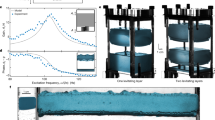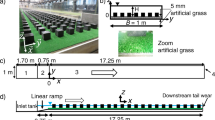Abstract
THE following is a curious puzzle. Given a square box having an area of 27 square inches on its floor and having vertical sides, and filled with water to a depth of 2 inches, it is required to find the size of a heavy cube which, when resting on the bottom of the box, will have its upper surface high and dry above the surface of the water. The curious thing is that there is no such cube. A very small cube will have its top nearly 2 inches below the surface; the largest cube that can go into the box, its edge being 5 inches and a fraction, forces all the water above it except a film and, again, has its top nearly 2 inches below the surface. There is one cube, that with its edge 3 inches, which has its top just on a level with the surface of the water; its top may be dry, but is not both high and dry. All other cubes are more or less submerged. This is a numerical example of a unique case.
Similar content being viewed by others
Article PDF
Author information
Authors and Affiliations
Rights and permissions
About this article
Cite this article
ALEXANDER, T. A Cubic and Submerged Cubes. Nature 66, 127 (1902). https://doi.org/10.1038/066127a0
Issue Date:
DOI: https://doi.org/10.1038/066127a0
Comments
By submitting a comment you agree to abide by our Terms and Community Guidelines. If you find something abusive or that does not comply with our terms or guidelines please flag it as inappropriate.



